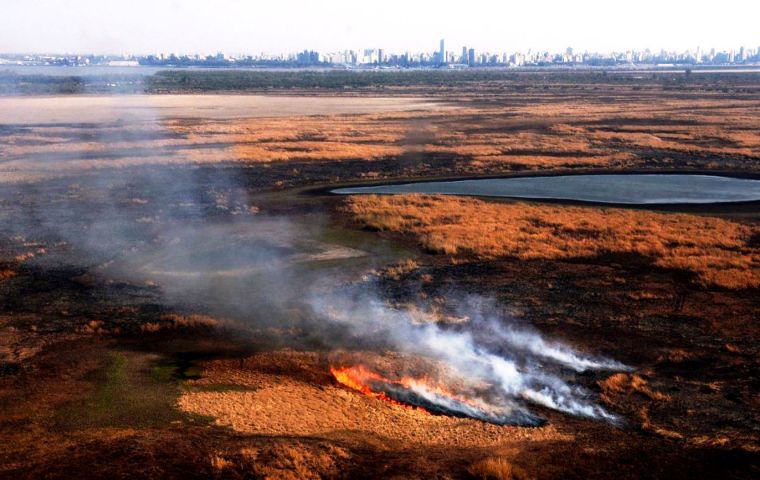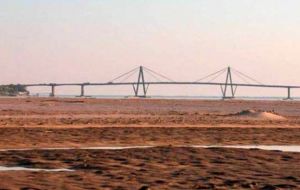MercoPress. South Atlantic News Agency
Drought and wildfires devastating South America's wetlands and forests
 Fires are being fanned by strong winds, temperatures over 40 C and the dry season in which farmers use slash-and-burn techniques to try to regenerate the soil.
Fires are being fanned by strong winds, temperatures over 40 C and the dry season in which farmers use slash-and-burn techniques to try to regenerate the soil.  The Parana River - one of the most powerful on the planet that originates in Brazil and empties into the River Plate estuary – is at its lowest level since 1970
The Parana River - one of the most powerful on the planet that originates in Brazil and empties into the River Plate estuary – is at its lowest level since 1970 Experts say the wildfires in a region that spans Argentina, Brazil, Bolivia, and Paraguay – especially the region between the Paraguay, Parana, and Uruguay rivers – have become critical in 2020.
“There has been a dramatic increase in fires. In Argentina there has been an increase of around 170%, it's very serious,” said Elisabeth Mohle, an environmental politics researcher at Argentina's San Martin National University (UNSM).
She says it's part of a wider problem affecting multiple regions around the world in 2020, including in Brazil's Amazonas state, Australia, California, and the Gran Chaco, South America's second largest forest after the Amazon.
The Pantanal - the world's largest wetlands that span Brazil, Bolivia and Paraguay - is experiencing its worst drought in 47 years.
The Parana River - one of the most powerful on the planet that originates in Brazil and empties into the River Plate estuary - is at its lowest level since 1970. In August it was down to 80 centimeters in Rosario, eastern Argentina, rather than the usual 3-4 meters for that time of year.
It's the same thing with the Paraguay River that is at its lowest level “in half a century,” according to Paraguay's national weather center in Asuncion.
The fires are being fanned by such conditions as strong winds, temperatures over 40 C and the dry season in which farmers use slash-and-burn techniques to try to regenerate the soil.
In Paraguay, “the fires... at the end of September and first week of October, broke all records,” Eduardo Mingo, a top official at the national weather center said.
The number of fires was up 46% in 2020, according to authorities.
Paraguay's capital Asuncion and several towns in northeastern Argentina and southern Brazil spent days and even weeks submerged under a thick fog due to the intense fires.
And without the usual rainfall that moistens the soil, the wetlands have been particularly badly affected.Images from the Brazilian Pantanal of the charred carcasses of birds, snakes, caimans and trees have shocked the world.
A quarter of the area was devastated between January and September, while the Paraguayan Pantanal had already been badly affected by fires in 2019.
The Parana Delta that is home to species such as the jaguar, Pampas cat and several rodents, has been hit by fires of an unprecedented intensity since January, leaving what some call a “desert of ashes” over tens of thousands of hectares of wetlands.
Agriculture is a massive source of income for the countries in this region but the slash-and-burn techniques used aggravate the situation. In the north of Argentina, “despite COVID-19 restrictions, between March 15 and September 30...twice the area of Buenos Aires was deforested,” according to Greenpeace.
The Mighty Earth NGO says that Paraguay's dry forests are “one of the main sites of deforestation in the world, mostly due to the expansion of pastureland and more recently soyabean plantations.” Argentina's government has accused cattle farmers of setting fires to “increase pastureland area” in the Parana Delta.




Top Comments
Disclaimer & comment rulesCommenting for this story is now closed.
If you have a Facebook account, become a fan and comment on our Facebook Page!